
Where Have All the Women’s Bikes Gone?
Based on a quick review of bike manufacturers’ websites, women’s bikes don’t seem to have gone anywhere, but a little probing shows the industry might to be in retrograde mode. Having made so much progress in the last 25 years, it would be a shame to lose sight of the goal: bountiful offerings for all riders. Although there are more choices than ever for female cyclists, the true distinctions between those bikes and unisex bikes are disappearing quickly.
Last month, Bicycling magazine’s annual Buyer’s Guide hit the news stands and for the first time in years, there was no mention of women’s bikes. Poof! Gone with the wind! I haven’t been able to find the reason for this -- so far, all Bicycling will say is women’s bikes will be covered in their Editor’s Choice and in individual bike reviews. Gone, but not forgotten. Now, add to this the fact that, with the notable exception of Specialized, in the past most smaller women’s bikes have offered 650c wheel sizes to fit the rider properly. (At Terry, we go a step further with not only 650c and 700c, but 24” wheels as well.) But recently, 650c has been disappearing from the lineup faster than real sugar in soft drinks.
No more 650c for Cannondale, Trek, Orbea or Fuji to name just a few. So what’s going on??? I spoke to some manufacturers -- those who continue to carry 650c and those who have dropped them. They all told me the same thing. 650c wheels are a must-have for a properly built small bicycle. But there is mounting pressure to build small bikes with 700c wheels. Some told me the consumer herself is driving this change. Apparently there are quite a few women who would prefer to ride an ill-fitting bike with 700c wheels than a properly-fitting 650c bicycle. This may be driven by hesitancy about the availability of 650c or the need to conform.
Others think the “push back” is from those dealers who don’t really understand how a 650c wheel makes a difference in bike fit and choose to stay in the 700c comfort zone rather than educate the consumer. Once a manufacturer has decided to embrace 700c wheels exclusively, just how will women’s bikes be differentiated from “unisex” bikes? Expect to see a lot more of this: “...a shorter crank and stem length, along with narrower handlebars, give it a women-specific fit”. Gee, that’s just what we did in the good old days of unisex! I can guarantee you that women on the tail of the bell curve, i.e. those very petite women are in for a rough time of it. As 700c returns, stand over heights are rising. Are manufacturers really reading the market correctly? Is there indeed a trade-off between the desire for a properly fitting bicycle and wheel size? What say you, dear reader?
Tags:
24 Comments
Georgena
Gretchen, I think the 650b tires will be around for a while. They have a very ardent group of supporters in the randonneurs. There are a couple of companies in the US importing these tires to their own spec. I wish I could some 559s designed as well as these tires.
Nadine
I think you are right, women´s bikes are disappearing. The European perspective on that: manufacturers do not see the need of women´s bikes with only about 10% of racing bike riders are women. In Germany I looked for a youth race bike and found an italian Concorde. Fits superbly but is not made anymore…
To alter this bike, I can not find any crank sets with 3 chain rings in shorter than 170. I have also looked at Stevens Bikes/Germany, they have very small womens frames, but do not change handlebars/cranks etc.
Lynn Cunningham MD
Thanks Georgena! I’ve been wondering… I bought a Trek WSD TTS in 2006 for my first Ironman event. It has 650c wheels, I purchased 2 different Terry saddles to try and settled on the Butterfly Tri Gel ( for distance, tri riders). I’ve been very happy with the bike, thought it was about perfect, but knew that it was NOT carbon and remained hopeful for a lighter, more aero women’s bike to be found.
Last Year, Trek came out with the Speed Concept. The triathlon and running endurance lifestyle is how I spend my free time, my non working time, my special time with my husband, and my time enjoying my world. I decided to purchase a higher end Speed Concept, as I thought it was time for me to go carbon, lighter, and faster. Besides, I was doing my 3rd Ironman and a few 1/2 ironman distances, I wanted to get faster! I must admit, it’s a pretty bike, it goes a little faster, but not as fast as I thought it would. When I asked bike store owner and my bike fitter, Jim Hogan,of Geneva bicycles, why it was coming in 700c wheels, and not the 650c wheels I expected, he didn’t have alot to say other than it was industry pressure. I asked if the bike could be fitted with the 650 wheels and shorter crank, and he said no, based on how it was set up. I have found I still prefer the subtle difference of the TTS trek bike fit over the fancier Trek speed concept. I think it’s the crank length and my lesser ability to keep up the cadence I should be holding on the bigger wheels and longer crank of the speed concept.
I practice medicine based on medical evidence. I give my patients blood pressure and diabetes pills, antibiotics and referrals to phys therapy because that’s what the research shows.
What do the studies, are there any studies, on bicycle geometry for women, best fit, fastest speeds, comparing 650c wheels and 700c wheels with shorter cranks? I think we are willing to pay for our hobby, our sport….the bike companies need to identify that we are, indeed, a significant part of the bike market and meet our needs.
Any thoughts?
Kat
I am 6 feet tall, and I like a tall bike, but there is a big difference between a man’s fit and a woman’s bike. Every time I buy a bike I assume I will have to change the handlebars, the gears and the cogs. But the bike still does not fit me. I am ready to buy a woman specific bike, for the comfort and fit.
Leave a comment
Your email address will not be published. Required fields are marked with *
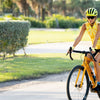

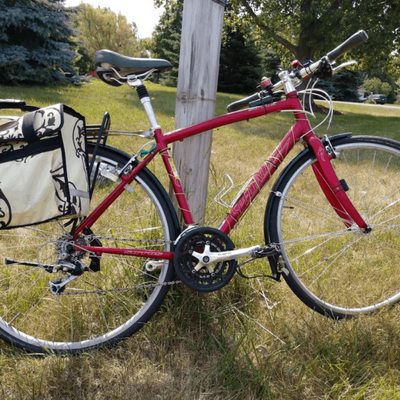
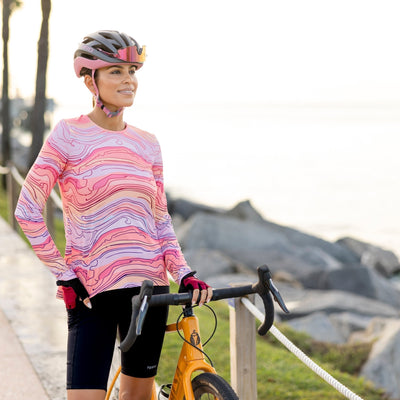
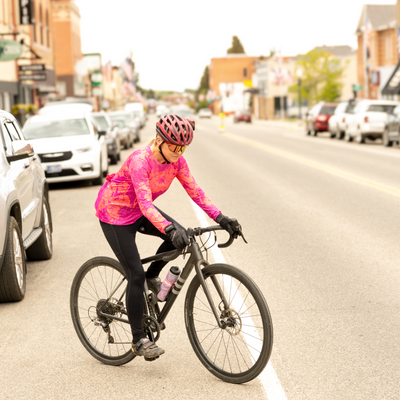
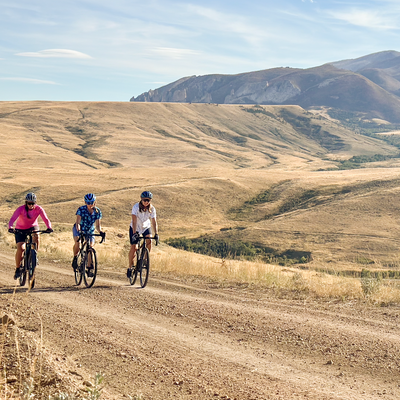


Georgena
Lynn, I can’t think of a reason why you can’t run shorter cranks. The chainrings are the same and nothing else changes other than the leverage you have (a little less because of the shorter crank arm length). There’s not one part of the bike that knows or cares how long the crankarms are. I don’t know what the ideal angle of the lower and upper leg is at the top of the pedal stroke (I’ll find out), but I know if it’s too acute, that doesn’t bode well for the knees. It is definitely easier to spin the circle if you can avoid this. Thanks for the idea — I’ll report back!